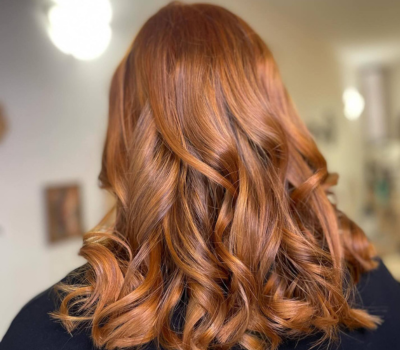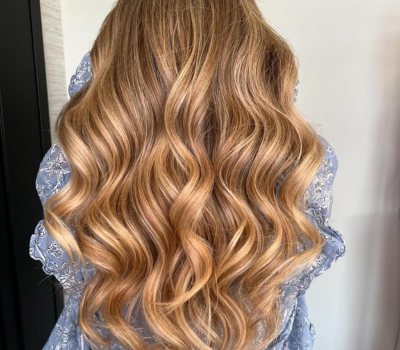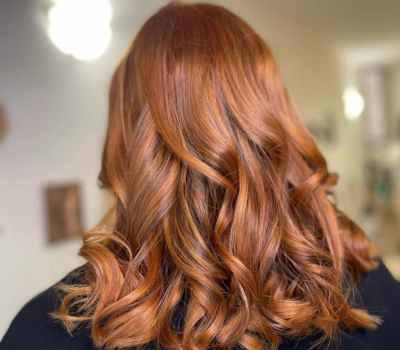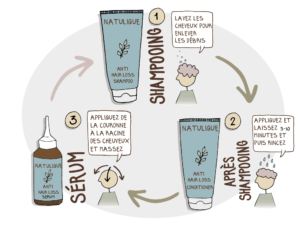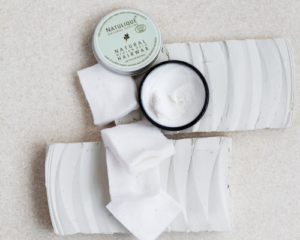Introduction to after-care
Bleach presentation
Definition of discoloration
Bleaching is a chemical process that removes hair's natural pigments. This process is commonly used to lighten hair in several shades or to prepare hair for brighter coloring. It works by opening the hair cuticle and dissolving melanin, the natural pigment that gives hair its color.
The different bleaching techniques
There are several bleaching techniques available to achieve different levels of lightening. The most common methods include the use of bleaching powders, lightening creams and lightening sprays. Specialists can choose the best method depending on the hair color and initial condition, as well as the desired end result.
The effects of bleaching on hair
Physical and structural effects
Bleaching can have significant effects on hair structure. By opening the cuticle to remove pigments, this process can weaken the hair fiber. Hair often becomes more porous, making it less able to retain moisture and more prone to breakage.
Effects on hair color and texture
In addition to altering natural color, bleaching can also alter hair texture. Hair can become rougher, less shiny, and more prone to frizz. These textural changes can make hair difficult to manage and more vulnerable to environmental damage.
“`
The importance of after-care
Maintaining healthy hair after bleaching
Why bleached hair needs special care
After bleaching, hair is particularly vulnerable. Bleaching alters the structure of the hair fiber, making it more fragile. That's why it's essential to adopt a care routine specifically designed to maintain the health of bleached hair. These treatments help restore lost proteins and moisture, fortifying the hair and preventing further damage. Ignoring these specific needs could exacerbate fragility, leading to breakage and a dull appearance.
The risks of not caring for hair after bleaching
Failure to provide the necessary care for bleached hair can lead to severe damage. Without proper treatment, increased porosity can lead to very dry hair that breaks easily. In addition, strands can become split, making hair difficult to style. Over time, these problems can worsen, requiring more drastic interventions to prevent hair loss. So it's crucial to pay attention to a regular hair care routine to avoid these problems in the long term.
Prevent future damage
Protect bleached hair from environmental damage
Bleached hair is particularly sensitive to environmental factors such as sun, wind and pollution. Exposure to these elements can exacerbate dryness and damage. Using products containing UV filters, protective oils and serums can help form a protective layer on the hair fiber. In addition, wearing a hat in direct sunlight and avoiding excessive heat on the hair can be effective in preserving the integrity of bleached hair.
The long-term impact of discoloration without proper care
Without proper care, bleached hair can suffer cumulative damage, often manifesting itself in loss of elasticity and reduced ability to retain moisture. This can lead to an overall damaged appearance and a significant decline in hair quality, affecting not only its appearance but also its feel. What's more, lack of care can lead to the need for frequent trimming to eliminate damaged ends, defeating any attempt to achieve longer, healthier hair. Post-color care is not just an option, but a necessity to avoid these undesirable effects in the long term.
- Adopt an adapted, regular skincare routine.
- Use protein-enriched and moisturizing products.
- Avoid excessive exposure to sunlight and heat.
- Opt for thermal and capillary protection.
- Plan weekly deep treatments to revitalize hair.
See also: Golden highlights: how to get them naturally?
Step-by-step guide to post-fade care
Recommended products and treatments
Shampoos and conditioners for bleached hair
Bleached hair requires special care to maintain its health and appearance. When choosing a shampoo, opt for sulfate-free products. Sulfates can be particularly aggressive for hair already weakened by bleaching. Shampoos for colored or bleached hair are formulated to gently cleanse while preserving the hair's integrity. In addition, conditioners rich in moisturizing ingredients such as argan oil, shea butter and proteins help restore moisture and softness. Regular use of these products will protect your hair against dryness and breakage.
Nourishing hair masks
Hair masks are an essential part of an after-color care routine. They provide deep hydration and replenish essential nutrients lost during the chemical process. A nourishing mask once a week can transform the appearance and texture of bleached hair. Look for masks containing ceramides, which help rebuild the lipid barrier, or proteins such as keratin, which intensively fortify. Apply the mask all over the hair, leave on for the recommended time and rinse, for soft, revitalized hair.
Hair serums and oils
The inclusion of serums and lightweight hair oils is crucial for bleached hair. These products seal in moisture and add a layer of protection against external aggressors. Oils such as jojoba oil or macadamia oil offer additional benefits in terms of shine and frizz reduction. Apply a few drops of oil to your palms, rub them together and smooth the ends for optimum effect. It's important to choose products that don't leave heavy residues, so as not to weigh down fine, bleached hair.
Habits and tips for optimal care
Regular maintenance routines
Incorporating regular treatments into your schedule is essential for maintaining bleached hair. Schedule regular visits to your hairdresser for refreshing cuts that eliminate split ends. Maintaining a hair care routine at home using the right products is just as important. Alternate between light daily care and deep weekly treatments to maintain the right balance between hydration and hair strength.
Precautions to be taken
Avoid practices that could further damage your hair, such as high-temperature blow-drying and frequent use of straightening or curling irons. Always apply a thermal protector before using heated tools. Also, don't brush wet hair aggressively; opt for a wide-tooth comb for gentle detangling. Finally, consider silk or satin pillowcases to limit friction during sleep, helping to minimize breakage and protect hair overnight.
“`
Tips for maintaining shine and luster after fading
Moisturizing and nourishing hair
Importance of continuous hydration
The shine of bleached hair is highly dependent on its ability to retain moisture. Using leave-in moisturizers can help maintain moisture throughout the day, contributing to long-lasting shine. Moisturizing sprays and lightweight hair milks are ideal for nourishing the cuticle without weighing hair down, ensuring that it always shines.
Inner nutrition for radiant hair
What you eat has a direct impact on the health and appearance of your hair. It's essential to eat foods rich in omega-3 fatty acids, vitamins A, C, D, and E, as well as protein to promote healthy hair from the inside out. Oily fish, nuts, seeds and green leafy vegetables are excellent choices to contribute to shiny, healthy hair.
Styling practices to enhance bleached hair
Selecting the right styling products
To enhance shine after bleaching, it's crucial to choose non-abrasive styling products. Gels and foams can weigh hair down if used in excess. Prefer water-based products and those containing shine-enhancing ingredients such as mica. In addition, a shine spray can be used as a finishing touch to intensify the shine of your strands.
Drying and styling techniques to maximize shine
Avoid overusing heated tools to limit damage. When drying, use a hairdryer with ionic technology and a low heat setting to seal the cuticle after moisturizing. Applying an anti-frizz serum before blow-drying or styling can also help maximize shine. Use soft brushes and wide-tooth combs to avoid breakage and preserve hair integrity.
Frequently asked questions
What products to avoid after bleaching?
Avoid products containing sulfates and drying alcohols, as they can accentuate the dryness and fragility of bleached hair.
How often should I cut my bleached hair?
We recommend trimming your ends every 6 to 8 weeks to eliminate split ends and keep your hair healthy and shiny.
Can I color my hair immediately after bleaching?
It's best to wait at least two weeks to allow hair to partially recover before applying a new color.
Are oil baths beneficial for bleached hair?
Yes, oil baths, especially with light oils like coconut or argan oil, can deeply nourish and restore shine.
How to minimize breakage in bleached hair?
Use heat protection products and avoid tight styles that can pull excessively on fragile strands.
Conclusion
In short, to maintain the luminosity and health of bleached hair, it's essential to adopt a proper care routine and take precautions with styling and diet. Carefully selected products tailored to the needs of bleached hair will have a significant impact on its overall appearance and long-term condition.
